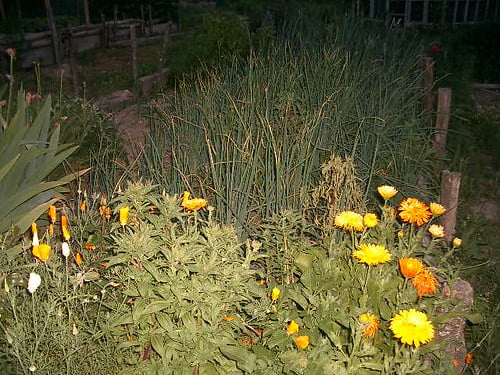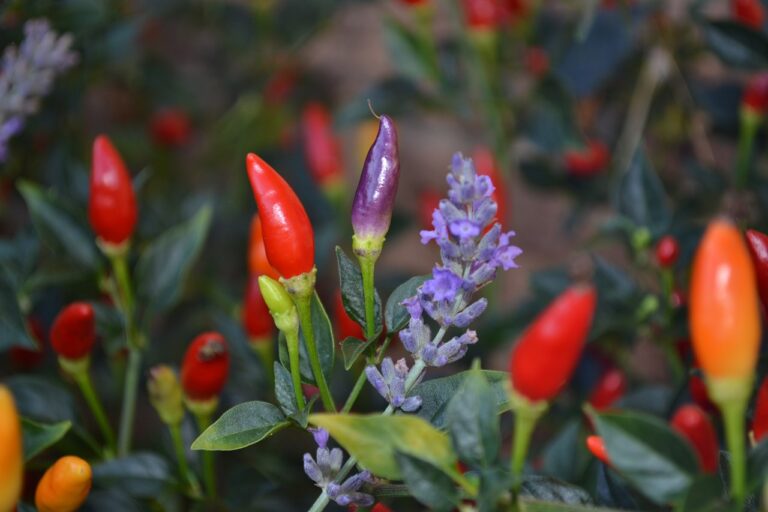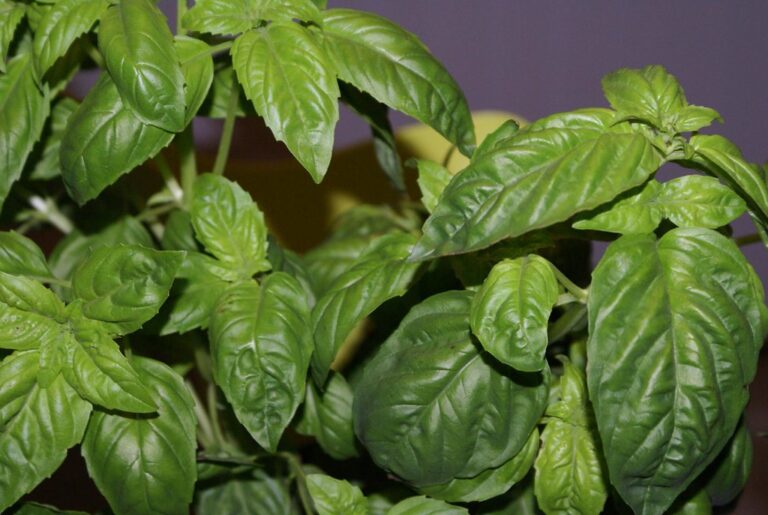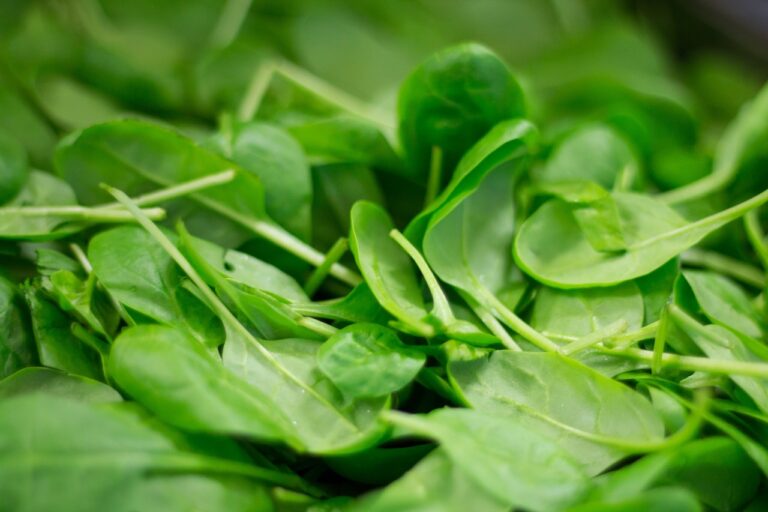The Benefits of Companion Planting: Pest Control, Enhanced Growth, Flavor, and Weed Suppression
Companion planting boosts pest control with natural repellents like marigolds and chives. Augmented growth occurs by pairing plants for support and optimizing sunlight. Flavor improves with basil near tomatoes and borage with strawberries. Weed suppression is achieved by using barriers like buckwheat. This method maximizes garden productivity and reduces the need for constant weeding. Natural plant relationships create a harmonious ecosystem that benefits all crops.
Pest Control Benefits
When I plant marigolds, garlic, and chives alongside my crops, I witness a remarkable decrease in pest infestations due to the natural repellent properties these companion plants possess. Marigolds are renowned for their ability to repel pests like nematodes and aphids. These flowers contain chemicals that can effectively kill nematodes in the soil, benefiting vulnerable plants nearby. Additionally, the pungent aroma of garlic and chives acts as a deterrent for many pests, keeping them away from my main crops.
Incorporating trap crop companion plants like nasturtiums further enriches my pest control strategy. Nasturtiums have a unique ability to lure pests away from the primary crops, serving as both pest control and providing edible plants. This practice not only helps protect my main crops from pest damage but also assures that I have a supplementary food source.
In my experience, companion plants play an important role in natural pest management by deterring harmful insects and promoting a balanced ecosystem. By strategically planting marigolds, garlic, chives, and trap crops like nasturtiums, I can create a harmonious environment where pests are controlled without the need for harmful chemicals. This method not only benefits the health of my plants but also contributes to sustainable gardening practices.
Enhanced Growth Effects
Pairing different types of plants strategically in companion planting not only aids in pest control but also fosters improved growth effects, promoting healthier development and maximizing yields in the garden. When pondering enhanced growth effects in companion planting, several key factors come into play:
- Vining plants and taller crops: Pairing vining plants such as cucumbers or beans with taller crops like corn or sunflowers can provide natural support for the vining plants. This support allows them to grow vertically, maximizing sunlight exposure and ameliorating overall growth.
- Sunlight requirements: Planning the layout of your garden to take into account the sunlight needs of each plant is essential for optimizing growth. By situating taller plants where they won’t shade shorter ones, you guarantee that each plant receives the sunlight it needs for healthy development.
- Root depth and nutrient uptake: Interplanting shallow-rooted crops with deep-rooted ones creates a beneficial relationship where the shallow-rooted plants can access nutrients in the deeper soil layers brought up by the deep-rooted plants. This improves overall nutrient uptake and fosters healthier plant growth.
- Vertical gardening techniques: Utilizing trellising and vertical gardening methods can help maximize space in companion planting. By growing plants vertically, you not only save space but also encourage better air circulation and sunlight exposure, leading to improved plant growth and higher yields.
Flavor Improvement Advantages
Planting basil near tomatoes not only boosts the tomatoes’ flavor but also helps in keeping pests like mosquitoes and flies at bay. The practice of companion planting with herbs like basil can lead to tastier crops overall. By strategically pairing plants like basil with tomatoes, you can heighten the culinary appeal of your garden produce.
Taste Enhancement Benefits
Improving the taste of your crops can be achieved through strategic companion planting, where certain herbs and vegetables are grown together to boost flavor profiles and natural defenses. In terms of taste enhancement benefits, consider these key points:
- Basil: Planting basil near tomatoes not only enriches the flavor of the tomatoes but also helps in repelling mosquitoes and flies.
- Borage: Pairing borage with tomatoes and strawberries can heighten their flavor profile, adding a delightful twist to your dishes.
- Garlic: Growing garlic alongside potatoes acts as a natural deterrent to insects, while also bolstering the plants’ own defenses.
- Mint: Companion planting mint aids in deterring aphids, ants, and flea beetles effectively, ensuring your plants thrive with fewer pests to contend with.
Flavor Pairing Advantages
Improving the overall taste of your crops can be achieved through thoughtful flavor pairing of herbs and vegetables. Basil, when planted near tomatoes, not only boosts flavor but also effectively repels mosquitoes and flies. Borage, when paired with tomatoes and strawberries, greatly enriches their flavor profiles. Garlic acts as a dual-purpose plant by deterring insects and adding a distinctive taste to dishes. Mint, known for repelling pests like aphids and ants, also introduces a revitalizing taste to foods. Additionally, dill attracts ladybugs that aid in pest control, while imparting a unique taste to dishes. By strategically combining these plants, you can enrich the flavors of your crops while naturally promoting pest control and growth.
Culinary Appeal Boosts
Elevating the culinary appeal of your crops can be easily achieved through strategic companion planting that enriches the flavors of your harvest. Here are some ways companion planting can boost the flavors of your crops:
- Basil: Improves the flavor of tomatoes when planted together.
- Mint: Deters pests like aphids and adds a fresh taste to dishes.
- Borage: Complements tomatoes and strawberries, enhancing their taste profiles.
- Garlic: Repels insects and pests like onion flies and Japanese beetles.
Weed Suppression Benefits
I’ve found that incorporating companion plants like buckwheat in my garden has greatly reduced the need for constant weeding. These plants act as natural barriers, covering the soil and outcompeting weeds for resources. By using weed-suppressing companions, I spend less time battling unwanted plants and more time enjoying a tidy, flourishing garden.
Natural Weed Barriers
Utilizing certain companion plants like buckwheat can effectively create natural weed barriers in the garden, promoting healthier plant growth and optimizing space for increased productivity. Concerning weed control and cover crops, buckwheat stands out for its ability to suppress weeds and improve soil fertility. Here’s why it’s a valuable addition to your garden:
- Buckwheat acts as a living mulch, smothering out weeds and reducing competition for resources.
- Planting buckwheat around vegetables like tomatoes and peppers helps manage weed growth.
- This cover crop serves as a natural weed barrier, reducing the need for manual weeding.
- Buckwheat, through companion planting techniques, not only suppresses weeds but also aids in optimizing garden space for improved plant health.
Reduced Weeding Efforts
To reduce the time and effort spent on weeding, incorporating companion plants that naturally suppress weeds is a strategic and efficient gardening practice. By selecting plants that serve as living mulch, such as buckwheat, gardeners can create a natural barrier that covers bare soil, hindering weed growth. This method of weed suppression through companion planting not only minimizes the need for manual weeding but also contributes to the overall health and appearance of the garden. The companion plants act as allies in the fight against weeds, allowing main crops to thrive without competing for resources. Embracing weed-controlling companion plants is a practical way to reduce weeding chores while promoting a flourishing and well-maintained garden space.
Companion Planting for Pest Control
Companion plants play a crucial role in pest control by naturally repelling harmful insects and attracting beneficial predators to the garden. When it comes to planting for pest control, there are several key strategies to contemplate:
- Repellent Plants: Certain companion plants like marigolds, garlic, and chives emit odors that pests find distasteful, driving them away from your main crops and reducing damage.
- Aromatic Herbs: Fragrant herbs such as basil not only improve the flavor of neighboring plants like tomatoes but also act as natural insect repellents, deterring pests like mosquitoes and flies.
- Nematode Control: French marigolds are known for their ability to produce chemicals that can deter nematodes, which are harmful to many types of plants. By planting marigolds near susceptible crops, you can help protect them from these destructive pests.
- Beneficial Predators: Companion plants like dill, fennel, and yarrow attract beneficial predatory insects such as ladybugs and lacewings. These predators feed on harmful pests like aphids, helping to keep pest populations in check without the need for pesticides.
Maximizing Growth With Companion Planting
Maximizing plant growth through strategic companion planting techniques involves pairing complementary species to boost overall garden productivity and health. When considering plant combinations, it is beneficial to pair vining plants like cucumbers or peas with taller crops such as corn or sunflowers. This arrangement provides natural support for climbing plants, allowing them to thrive and access more sunlight. Additionally, interplanting deep-rooted crops like tomatoes with shallow-rooted ones such as lettuce can improve nutrient uptake and overall plant health. By doing so, the deep roots can reach nutrients in the soil that shallow roots cannot access, creating a symbiotic relationship that benefits both plants.
To further maximize growth potential, utilizing trellising and vertical gardening techniques can be advantageous. These methods help optimize space usage and increase yield in companion planting setups. By training plants to grow vertically, you not only save space but also improve air circulation around the plants, reducing the risk of diseases.






